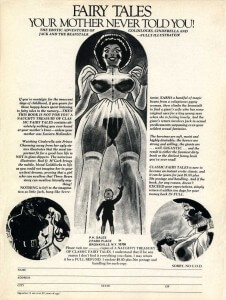-
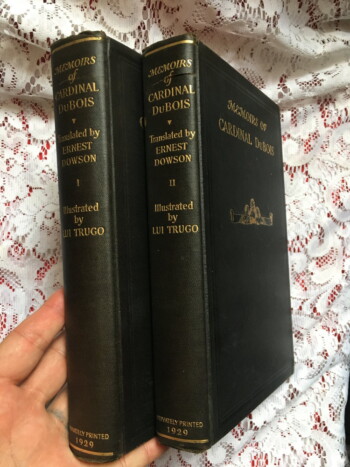
 Memoirs of Cardinal Dubois | A complete unabridged translation from the French by Ernest Dowson | Embellished with photogravure portraits of Cardinal Dubois and the Duc d'Orleans, together with twelve full page drawings by Lui Trugo (Privately Printed for Subscribers [Art Studio Press], New York, 1929, #264/1500) 9.75"x6.5", 2 volumes on hand laid paper, xvi-376pp, viii-349pp, black cloth with gilt titles and decorations, top-edge inked, others deckled, good condition bumped corners and a few scuff marks. Two different ex libris Alan K Dolliver bookplates inside front covers of both books. According to the publisher, the original manuscript which was written entirely in Dubois hand was stolen by his secretary Lavergne after his death in 1723. It was later discovered of its literary value that Lavergne attempted to sell the manuscript. He was found and arrested. They later fell into the hands of Comte de Maurepas, then upon his death they were passed on to an anonymous writer named Mercier (possibly M. Paul Laroix) whose family had it published in 1829. The manuscript then became lost. In 1899 and English version of the book translated by Ernest Christopher Dowson, was published by the notorious pornographer, Leonard Smithers & Co. This is, presumably a reprinting of that translation. Guillaume Dubois (1656-1723), a son of a country doctor, rose from humble beginnings to positions of power and high honor in government and in the Catholic Church. He is best known for negotiating the Triple Alliance of 1717 between France, the Dutch Republic and Great Britain against their mutual enemy, Spain. Considered one of the four great French Cardinal-Ministers (Richelieu, Mazarin, Dubois, and Fleury). His ecclesiastical career left a great deal to be desired. Although there is no proof of the prevalent assertion that he got secretly married, his licentiousness, and notorious impiety, even at the time of his death, make it evident that he pursued and used ecclesiastical dignities principally to enhance his political position and prestige. Eventually in 1721, Du Bois was created cardinal. He had the reputation of a libertine and adventurer and made plenty of enemies. One of his rivals was charged at creating his portrait, the Duc de Saint-Simon, who was said to have placed a painting of Dubois in his lavatory. Saint-Simon had this to say about the Cardinal: "He was a little, pitiful, wizened, herring-gutted man, in a flaxen wig, with a weasel's face, brightened by some intellect. All the vices - perfidy, avarice, debauchery, ambition, flattery - fought within him for the mastery. He was so consummate a liar that, when taken in the fact, he could brazenly deny it. Even his wit and knowledge of the world were spoiled, and his affected gaiety was touched with sadness, by the odour of falsehood which escaped through every pore of his body." This famous picture is certainly biased. Dubois was unscrupulous, but so were his contemporaries, and whatever vices he had, he forged a European peace that, with the exception of small, restrained military expeditions against the Austrian Habsburgs, would last for a quarter of a century.
Memoirs of Cardinal Dubois | A complete unabridged translation from the French by Ernest Dowson | Embellished with photogravure portraits of Cardinal Dubois and the Duc d'Orleans, together with twelve full page drawings by Lui Trugo (Privately Printed for Subscribers [Art Studio Press], New York, 1929, #264/1500) 9.75"x6.5", 2 volumes on hand laid paper, xvi-376pp, viii-349pp, black cloth with gilt titles and decorations, top-edge inked, others deckled, good condition bumped corners and a few scuff marks. Two different ex libris Alan K Dolliver bookplates inside front covers of both books. According to the publisher, the original manuscript which was written entirely in Dubois hand was stolen by his secretary Lavergne after his death in 1723. It was later discovered of its literary value that Lavergne attempted to sell the manuscript. He was found and arrested. They later fell into the hands of Comte de Maurepas, then upon his death they were passed on to an anonymous writer named Mercier (possibly M. Paul Laroix) whose family had it published in 1829. The manuscript then became lost. In 1899 and English version of the book translated by Ernest Christopher Dowson, was published by the notorious pornographer, Leonard Smithers & Co. This is, presumably a reprinting of that translation. Guillaume Dubois (1656-1723), a son of a country doctor, rose from humble beginnings to positions of power and high honor in government and in the Catholic Church. He is best known for negotiating the Triple Alliance of 1717 between France, the Dutch Republic and Great Britain against their mutual enemy, Spain. Considered one of the four great French Cardinal-Ministers (Richelieu, Mazarin, Dubois, and Fleury). His ecclesiastical career left a great deal to be desired. Although there is no proof of the prevalent assertion that he got secretly married, his licentiousness, and notorious impiety, even at the time of his death, make it evident that he pursued and used ecclesiastical dignities principally to enhance his political position and prestige. Eventually in 1721, Du Bois was created cardinal. He had the reputation of a libertine and adventurer and made plenty of enemies. One of his rivals was charged at creating his portrait, the Duc de Saint-Simon, who was said to have placed a painting of Dubois in his lavatory. Saint-Simon had this to say about the Cardinal: "He was a little, pitiful, wizened, herring-gutted man, in a flaxen wig, with a weasel's face, brightened by some intellect. All the vices - perfidy, avarice, debauchery, ambition, flattery - fought within him for the mastery. He was so consummate a liar that, when taken in the fact, he could brazenly deny it. Even his wit and knowledge of the world were spoiled, and his affected gaiety was touched with sadness, by the odour of falsehood which escaped through every pore of his body." This famous picture is certainly biased. Dubois was unscrupulous, but so were his contemporaries, and whatever vices he had, he forged a European peace that, with the exception of small, restrained military expeditions against the Austrian Habsburgs, would last for a quarter of a century. -
 Napoleon et les Femmes | L 'amour, Frederick Masson, illus. A. Calbet (Librairie Borel, Paris, 1899 "Collection Nymphée") 7.5" X 3.75", 391pp.+, 3/4 blue leather over marbled blue silk-covered boards, 5 raised bands, top edge gilt, marbled end-papers, illustrations throughout This book focuses on the life of women under the Consulate and the Empire. It considers Napoleon’s conception of women, examining his contribution to the drafting of the Civil Code on the question of the place of women in society or the education of young girls. The memoirs and correspondence give an idea of how the women who lived through the Empire perceived this period of reforms, deprivation of freedoms, and also wars.
Napoleon et les Femmes | L 'amour, Frederick Masson, illus. A. Calbet (Librairie Borel, Paris, 1899 "Collection Nymphée") 7.5" X 3.75", 391pp.+, 3/4 blue leather over marbled blue silk-covered boards, 5 raised bands, top edge gilt, marbled end-papers, illustrations throughout This book focuses on the life of women under the Consulate and the Empire. It considers Napoleon’s conception of women, examining his contribution to the drafting of the Civil Code on the question of the place of women in society or the education of young girls. The memoirs and correspondence give an idea of how the women who lived through the Empire perceived this period of reforms, deprivation of freedoms, and also wars. -
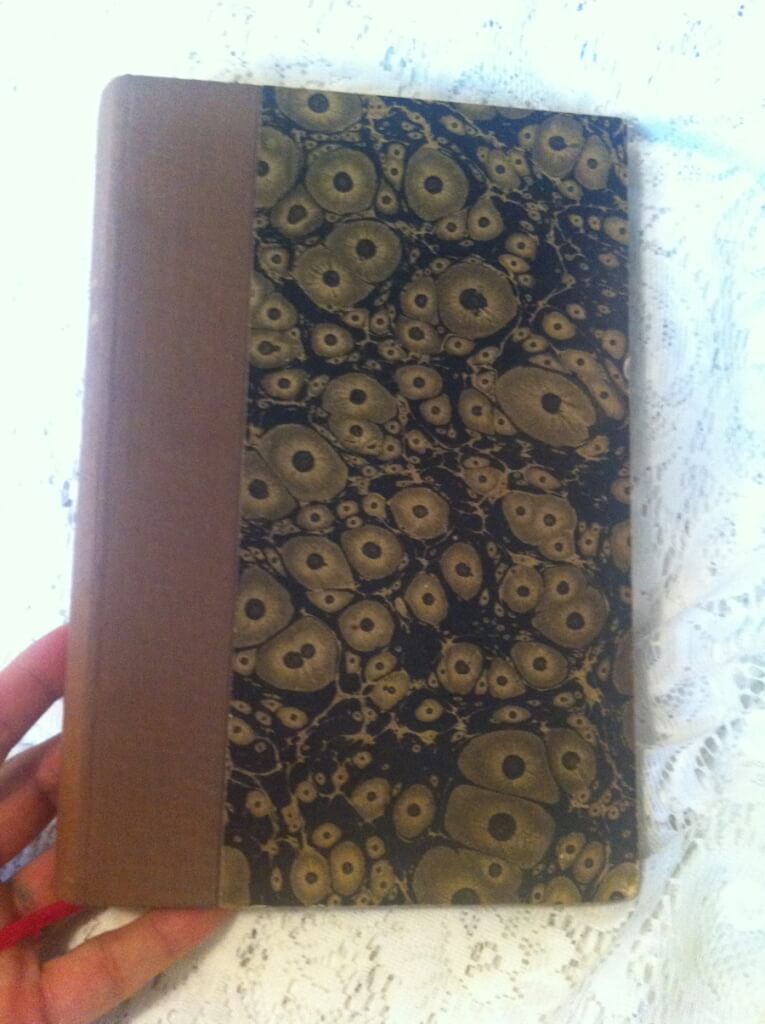
 Aphrodite, mœurs antiques, by Pierre Louÿs, illus. Eduard Zier (Librairie Illustree, J. Tallandier, Éditeur, nd [c. 1900], Paris, printed by Charles Hérissey, engravings executed by Ruckert et Cie, on Champon, Bichelberger et Cie ) 6.75" x 10", 374pp, hardbound in half buckram over marbled boards, very good condition for age, some bumping to boards and foxing throughout pages, red ribbon intact Pierre Louys (1870 - 1925) was a French poet and writer, most renowned for lesbian and classical themes in some of his writings. He is known as a writer who "expressed pagan sensuality with stylistic perfection." "Aphrodite: mæurs antiques" (Ancient Manners) is a "libertine" story set in ancient Alexandria. Highlights include the loves of Chrysis, an orgy banquet ending in the crucifixion of a slave, the love of two young musician girls and the festivals of Aphrodite.
Aphrodite, mœurs antiques, by Pierre Louÿs, illus. Eduard Zier (Librairie Illustree, J. Tallandier, Éditeur, nd [c. 1900], Paris, printed by Charles Hérissey, engravings executed by Ruckert et Cie, on Champon, Bichelberger et Cie ) 6.75" x 10", 374pp, hardbound in half buckram over marbled boards, very good condition for age, some bumping to boards and foxing throughout pages, red ribbon intact Pierre Louys (1870 - 1925) was a French poet and writer, most renowned for lesbian and classical themes in some of his writings. He is known as a writer who "expressed pagan sensuality with stylistic perfection." "Aphrodite: mæurs antiques" (Ancient Manners) is a "libertine" story set in ancient Alexandria. Highlights include the loves of Chrysis, an orgy banquet ending in the crucifixion of a slave, the love of two young musician girls and the festivals of Aphrodite. -
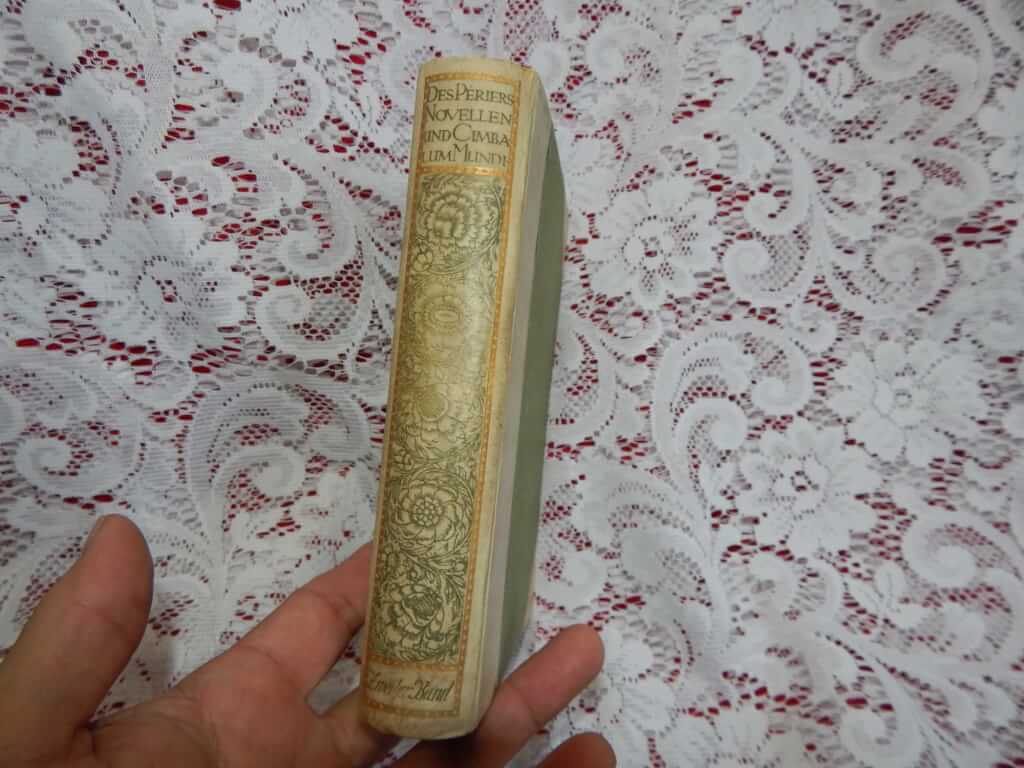
 Novellen und Cymbalum Mundi: Die neuen Schwänke und lustigen Unterhaltungen gefolgt von der Weltbimmel (VOL 2 only), by Bonaventure Des Periers. "For the first time translated from French and introduced by Hanns Floerke with 10 illustrations by Franz von Bayros" (Georg Müller, München und Leipzig 1910) 5.25"x7", 404pp, vol 2 of 2, top edge gilt, other edges deckled, 3/4 vellum on green boards, 5 illustrations by Bayros tipped in, ribbon present but detached, good+ condition. German translation of Des Periers short stories and Cymbalum Mundi, Four Very Ancient Joyous and Facetious Dialogues. Bonaventure des Périers (c. 1500 – 1544) was a French storyteller and humanist who attained notoriety as a freethinker. Margaret of Angoulême, queen of Navarre, made him her valet de chambre in 1536. He acted as her secretary and transcribed her Heptaméron; some maintain that he in fact wrote the work. The free discussions permitted at Margaret’s court encouraged a license of thought as displeasing to the Calvinists as to the Roman Catholics; it became skepticism in Des Périers’s Cymbalum Mundi, a brilliant and violent attack upon Christianity. The allegorical form of its four dialogues in imitation of the Greek rhetorician Lucian did not conceal its real meaning. It was suppressed (c. 1538), but it was reprinted in Paris in the same year. His book made many bitter enemies for Des Périers, who prudently left Paris and settled at Lyon. Tradition has it that he killed himself in 1544, but this is questionable. Franz von Bayros (1866–1924) was an Austrian commercial artist, illustrator, and painter, best known for his controversial Tales at the Dressing Table portfolio, a book considered so dangerous to the morality of the time that Von Bayros was arrested and forced into exile. He was obliged to move from one European capital to another as each outrageous new work was banned by the authorities.
Novellen und Cymbalum Mundi: Die neuen Schwänke und lustigen Unterhaltungen gefolgt von der Weltbimmel (VOL 2 only), by Bonaventure Des Periers. "For the first time translated from French and introduced by Hanns Floerke with 10 illustrations by Franz von Bayros" (Georg Müller, München und Leipzig 1910) 5.25"x7", 404pp, vol 2 of 2, top edge gilt, other edges deckled, 3/4 vellum on green boards, 5 illustrations by Bayros tipped in, ribbon present but detached, good+ condition. German translation of Des Periers short stories and Cymbalum Mundi, Four Very Ancient Joyous and Facetious Dialogues. Bonaventure des Périers (c. 1500 – 1544) was a French storyteller and humanist who attained notoriety as a freethinker. Margaret of Angoulême, queen of Navarre, made him her valet de chambre in 1536. He acted as her secretary and transcribed her Heptaméron; some maintain that he in fact wrote the work. The free discussions permitted at Margaret’s court encouraged a license of thought as displeasing to the Calvinists as to the Roman Catholics; it became skepticism in Des Périers’s Cymbalum Mundi, a brilliant and violent attack upon Christianity. The allegorical form of its four dialogues in imitation of the Greek rhetorician Lucian did not conceal its real meaning. It was suppressed (c. 1538), but it was reprinted in Paris in the same year. His book made many bitter enemies for Des Périers, who prudently left Paris and settled at Lyon. Tradition has it that he killed himself in 1544, but this is questionable. Franz von Bayros (1866–1924) was an Austrian commercial artist, illustrator, and painter, best known for his controversial Tales at the Dressing Table portfolio, a book considered so dangerous to the morality of the time that Von Bayros was arrested and forced into exile. He was obliged to move from one European capital to another as each outrageous new work was banned by the authorities. -

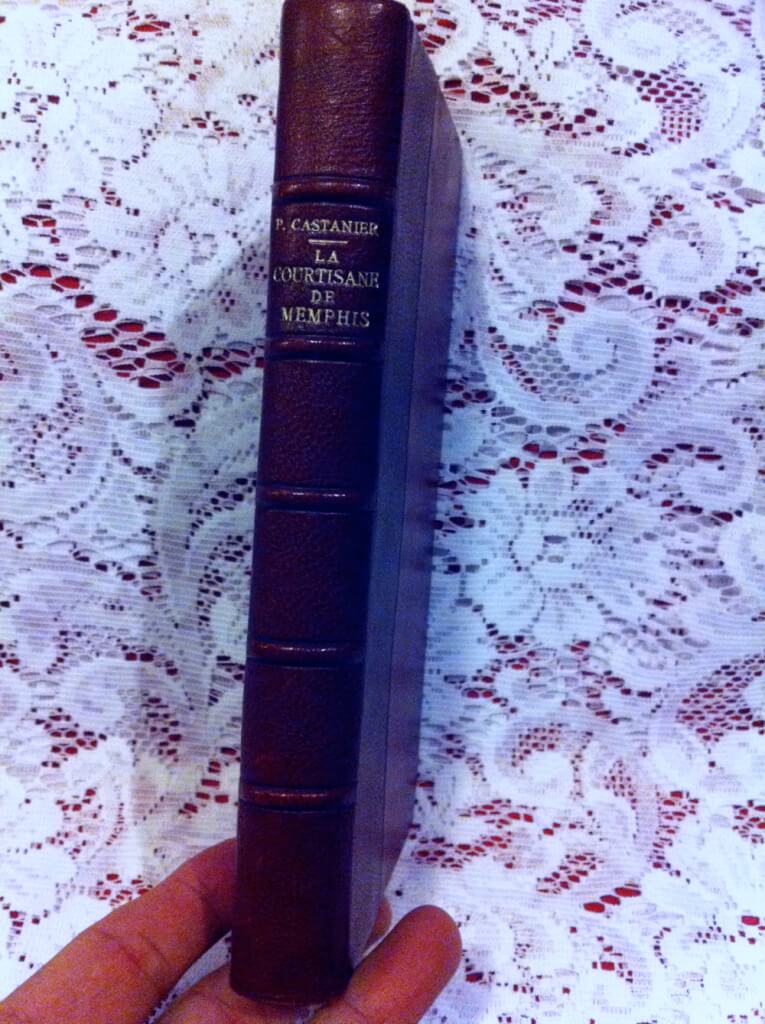 La Courtisane de Memphis, Prosper Castanier, illust. by A. Calbet (Librairie L. Borel, Paris, 1900 "Nymphée Collection") 7.75" X 4", 242pp.+, 1/2 red leather over silk-covered boards, marbled end-papers, gallery of 7 full-page illustrations in red, 5 pages of ads in back, fine condition for age, ribbon intact. In French, The Courtesan of Memphis. Prosper Castanier wrote of the decadence of ancient Rome. This is a beautiful example of a rare book. The French author, poet, novelist and historian Prosper Castanier (1865-19??) was born in Saint-Ambroix (Gard). He was the editor-in-chief of the "Progrès du midi". He had made a specialty of novels set in antiquity. (Particularly after the success of Aphrodite by Pierre Louès, published in 1896)
La Courtisane de Memphis, Prosper Castanier, illust. by A. Calbet (Librairie L. Borel, Paris, 1900 "Nymphée Collection") 7.75" X 4", 242pp.+, 1/2 red leather over silk-covered boards, marbled end-papers, gallery of 7 full-page illustrations in red, 5 pages of ads in back, fine condition for age, ribbon intact. In French, The Courtesan of Memphis. Prosper Castanier wrote of the decadence of ancient Rome. This is a beautiful example of a rare book. The French author, poet, novelist and historian Prosper Castanier (1865-19??) was born in Saint-Ambroix (Gard). He was the editor-in-chief of the "Progrès du midi". He had made a specialty of novels set in antiquity. (Particularly after the success of Aphrodite by Pierre Louès, published in 1896) -
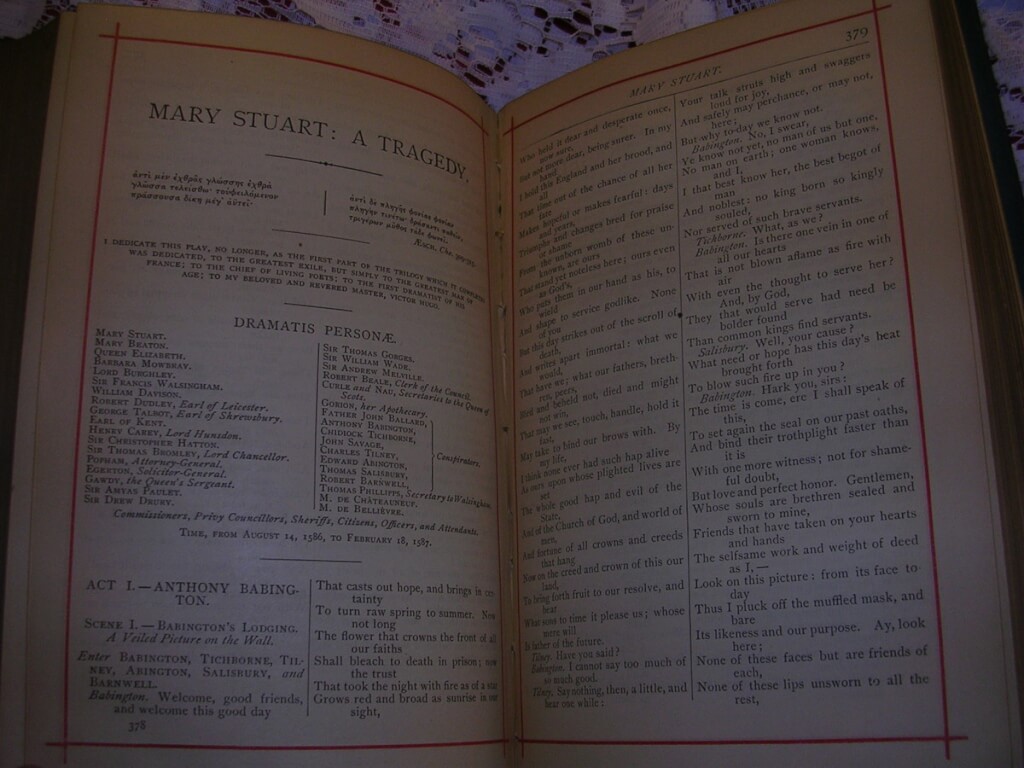
 Selections from the Poetical Works of A. C. Swinburne, from the latest English edition of his works., A. C. Swinburne, ed. R. H. Stoddard (Thomas Y. Crowell & Co., New York, 1884 [first edition, thus.]) 7.5" x 5", xxii, 634pp, Hardcover, raised and gilted blue cloth decorated binding. Gilt edges internal pages framed in red lines. Good condition, bumped and worn corners and spine. Binding tight. Signed by previous owner "Ray E. Searls 1900" Swinburne was an English poet, playwright, novelist, and critic. Considered a decadent poet, although Swinburne perhaps professed to more vice than he actually indulged in; Oscar Wilde stated that Swinburne was "a braggart in matters of vice, who had done everything he could to convince his fellow citizens of his homosexuality and bestiality without being in the slightest degree a homosexual or a bestializer." He was nominated for the Nobel Prize in Literature in every year from 1903 to 1907 and again in 1909.
Selections from the Poetical Works of A. C. Swinburne, from the latest English edition of his works., A. C. Swinburne, ed. R. H. Stoddard (Thomas Y. Crowell & Co., New York, 1884 [first edition, thus.]) 7.5" x 5", xxii, 634pp, Hardcover, raised and gilted blue cloth decorated binding. Gilt edges internal pages framed in red lines. Good condition, bumped and worn corners and spine. Binding tight. Signed by previous owner "Ray E. Searls 1900" Swinburne was an English poet, playwright, novelist, and critic. Considered a decadent poet, although Swinburne perhaps professed to more vice than he actually indulged in; Oscar Wilde stated that Swinburne was "a braggart in matters of vice, who had done everything he could to convince his fellow citizens of his homosexuality and bestiality without being in the slightest degree a homosexual or a bestializer." He was nominated for the Nobel Prize in Literature in every year from 1903 to 1907 and again in 1909. -
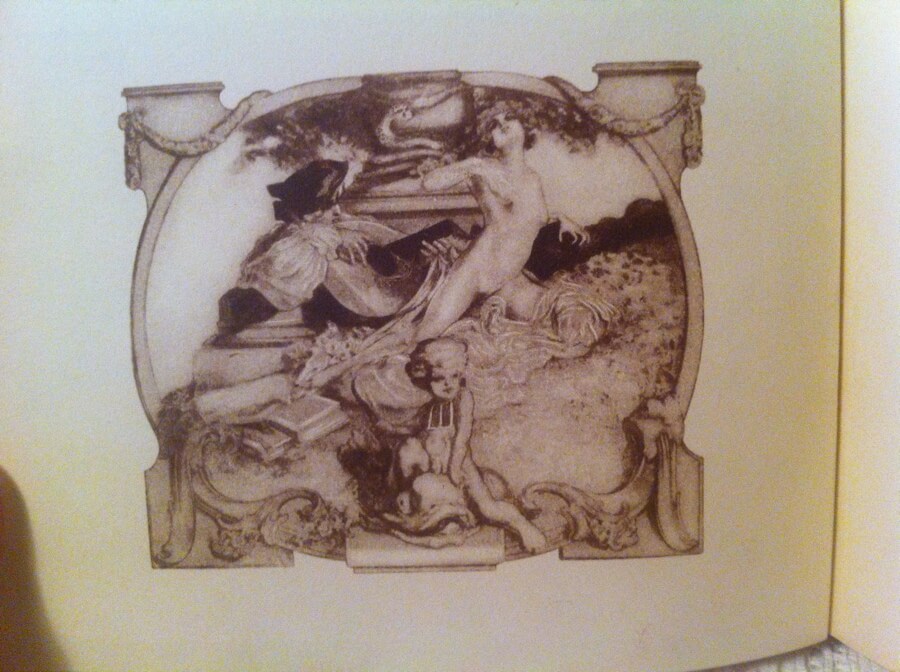
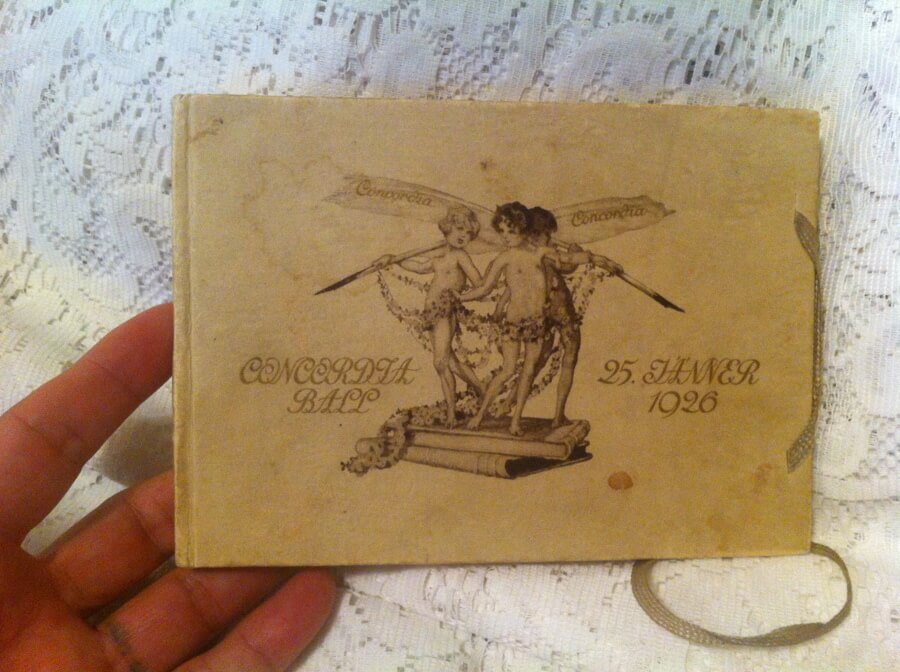 Galante Lieder und Gedichte, Concordia Ball 25. Jänner 1926 [Galante songs and poems with images after originals by Franz von Bayros selected by Johannes Pilz and Viktor Wögerer, Concordia Ball, January 25, 1926] (Der Presseclub Concordia, Strache, Vienna 1926) 6.5"x4.75", very good condition, boards slightly rubbed and stained, interior fine, with carrying strap intact. Press Club Concordia, an organization of Austrian journalists and writers, has been holding a traditional Viennese ball at the Vienna City Hall each June for over 150 years. In 1926 their program book featured art by Franz von Bayros. The illustrations feature both erotic and musical themes. This is a great piece of European/Austrian interbellum history, a rare find in this condition with the carrying strap still intact.
Galante Lieder und Gedichte, Concordia Ball 25. Jänner 1926 [Galante songs and poems with images after originals by Franz von Bayros selected by Johannes Pilz and Viktor Wögerer, Concordia Ball, January 25, 1926] (Der Presseclub Concordia, Strache, Vienna 1926) 6.5"x4.75", very good condition, boards slightly rubbed and stained, interior fine, with carrying strap intact. Press Club Concordia, an organization of Austrian journalists and writers, has been holding a traditional Viennese ball at the Vienna City Hall each June for over 150 years. In 1926 their program book featured art by Franz von Bayros. The illustrations feature both erotic and musical themes. This is a great piece of European/Austrian interbellum history, a rare find in this condition with the carrying strap still intact. -
Out of stock

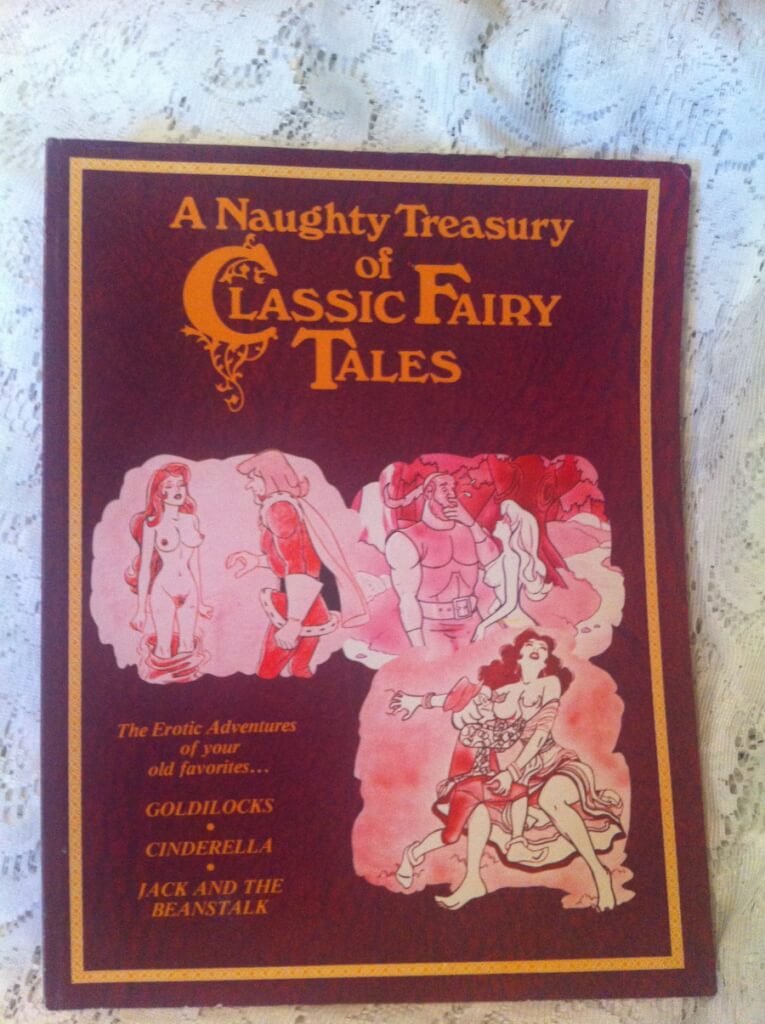 Naughty Treasury of Classic Fairy Tales, "Translated from the Old Saxon and Illustrated by Sir Rod Q. M'Gurk, Knight of the Brush (np, nd c. 1975) 8.5"x11", 96pp (unpaginated), soft covers, good condition, some minor bumping to corners, near fine internal pages I've been able to find a few references to this book and very little about "Sir Rod Q. M'Gurk". He apparently also had his cartoons published in Swank magazine c. 1976-7. Eventually it came to the attention of some illustrators and (with help of former Disney animators) was made into a movie by Don Jurwich (not sure the connection between him and Sir Rod Q. M'Gurk, but I'd love to know if it was him).
Naughty Treasury of Classic Fairy Tales, "Translated from the Old Saxon and Illustrated by Sir Rod Q. M'Gurk, Knight of the Brush (np, nd c. 1975) 8.5"x11", 96pp (unpaginated), soft covers, good condition, some minor bumping to corners, near fine internal pages I've been able to find a few references to this book and very little about "Sir Rod Q. M'Gurk". He apparently also had his cartoons published in Swank magazine c. 1976-7. Eventually it came to the attention of some illustrators and (with help of former Disney animators) was made into a movie by Don Jurwich (not sure the connection between him and Sir Rod Q. M'Gurk, but I'd love to know if it was him). -

 The Perfumed Garden: A Manual of Arabian Erotology, Sheikh Nefzawi (Editions de la Fontaine d'Or, Paris, 1900 [Imprimerie M. Laballery, Clamecy (Nievre) 1952]) 8.75" X 5.5", 189pp. full leather rebinding of the paperback (original covers included), fine condition, ribbin intact, Original back cover states "not to be sold in England or U.S.A" The Perfumed Garden of Sensual Delight is a fifteenth-century Arabic sex manual and work of erotic literature. The book presents opinions on what qualities men and women should have to be attractive, gives advice on sexual technique, warnings about sexual health, and recipes to remedy sexual maladies. It gives lists of names for the penis and vagina, has a section on the interpretation of dreams, and briefly describes sex among animals. Interspersed with these there are a number of stories which are intended to give context and amusement. Sheikh Nefzawi (Abu Abdullah Muhammad ben Umar Nafzawi), was born among the Berber Nefzawa tribe in the south of present-day Tunisia. He probably wrote The Perfumed Garden sometime during the twelfth century, compiled at the request of the Hafsid ruler of Tunis, Abū Fāris ʿAbd al-ʿAzīz al-Mutawakkil. A nice full leather copy of the work.
The Perfumed Garden: A Manual of Arabian Erotology, Sheikh Nefzawi (Editions de la Fontaine d'Or, Paris, 1900 [Imprimerie M. Laballery, Clamecy (Nievre) 1952]) 8.75" X 5.5", 189pp. full leather rebinding of the paperback (original covers included), fine condition, ribbin intact, Original back cover states "not to be sold in England or U.S.A" The Perfumed Garden of Sensual Delight is a fifteenth-century Arabic sex manual and work of erotic literature. The book presents opinions on what qualities men and women should have to be attractive, gives advice on sexual technique, warnings about sexual health, and recipes to remedy sexual maladies. It gives lists of names for the penis and vagina, has a section on the interpretation of dreams, and briefly describes sex among animals. Interspersed with these there are a number of stories which are intended to give context and amusement. Sheikh Nefzawi (Abu Abdullah Muhammad ben Umar Nafzawi), was born among the Berber Nefzawa tribe in the south of present-day Tunisia. He probably wrote The Perfumed Garden sometime during the twelfth century, compiled at the request of the Hafsid ruler of Tunis, Abū Fāris ʿAbd al-ʿAzīz al-Mutawakkil. A nice full leather copy of the work. -

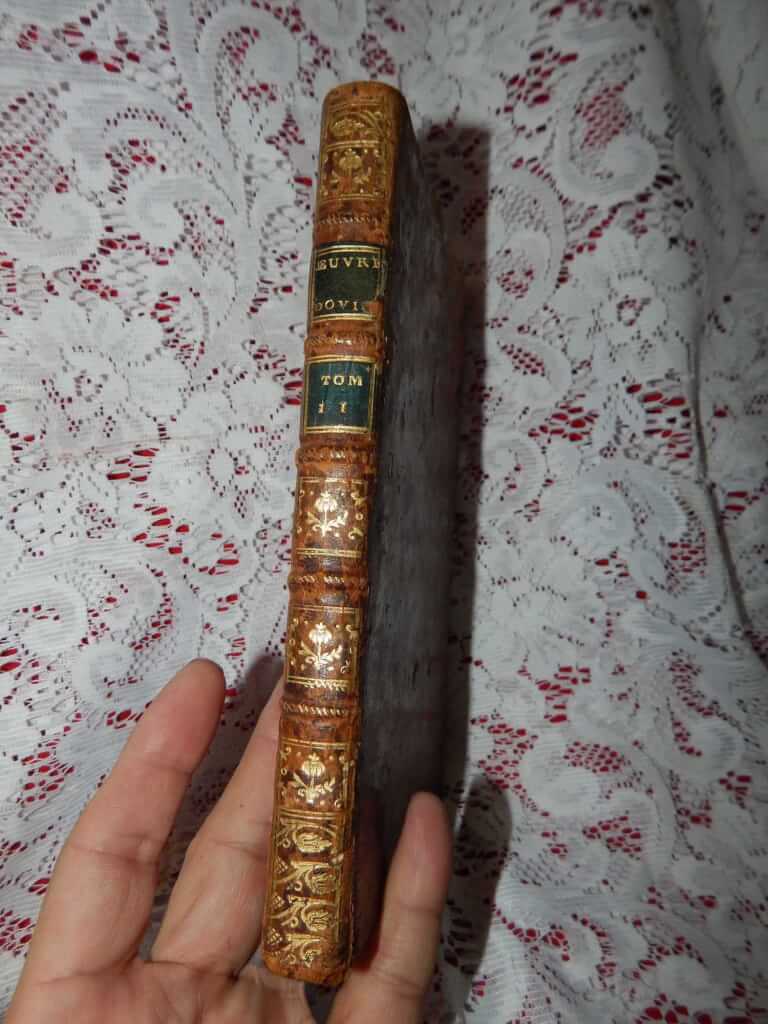 Les Œuvres Galantes et Amoureuses D'Ovide, contenant l'Art d'Aimer, le Remede d'Amour, les Épitre et les Élégies amoureuses, Nouvelle Édition (Vol 2 only of 2) (A Cythere, Aux Dépens du Loisir, 1774) 5"x8", 204pp, full calf, gilt titles and decorations to spine, 5 raised bands, marbled boards, good+ condition 2nd volume only beautifully bound, this volume contains the Art of Love, the Remedy of Love, the Letters and Elegies in Love, New Edition (Vol 2 only of 2) Publius Ovidius Naso (43 BC – AD 17/18), known as Ovid in the English-speaking world, was a Roman poet who lived during the reign of Augustus. He was a contemporary of the older Virgil and Horace, with whom he is often ranked as one of the three canonical poets of Latin literature. The Imperial scholar Quintilian considered him the last of the Latin love elegists. He enjoyed enormous popularity, but, in one of the mysteries of literary history, was sent by Augustus into exile in a remote province on the Black Sea, where he remained until his death. Ovid himself attributes his exile to carmen et error, "a poem and a mistake", but his discretion in discussing the causes has resulted in much speculation among scholars. The first major Roman poet to begin his career during the reign of Augustus, Ovid is today best known for the Metamorphoses, a 15-book continuous mythological narrative written in the meter of epic, and for works in elegiac couplets such as Ars Amatoria ("The Art of Love") and Fasti. His poetry was much imitated during Late Antiquity and the Middle Ages, and greatly influenced Western art and literature. The Metamorphoses remains one of the most important sources of classical mythology.
Les Œuvres Galantes et Amoureuses D'Ovide, contenant l'Art d'Aimer, le Remede d'Amour, les Épitre et les Élégies amoureuses, Nouvelle Édition (Vol 2 only of 2) (A Cythere, Aux Dépens du Loisir, 1774) 5"x8", 204pp, full calf, gilt titles and decorations to spine, 5 raised bands, marbled boards, good+ condition 2nd volume only beautifully bound, this volume contains the Art of Love, the Remedy of Love, the Letters and Elegies in Love, New Edition (Vol 2 only of 2) Publius Ovidius Naso (43 BC – AD 17/18), known as Ovid in the English-speaking world, was a Roman poet who lived during the reign of Augustus. He was a contemporary of the older Virgil and Horace, with whom he is often ranked as one of the three canonical poets of Latin literature. The Imperial scholar Quintilian considered him the last of the Latin love elegists. He enjoyed enormous popularity, but, in one of the mysteries of literary history, was sent by Augustus into exile in a remote province on the Black Sea, where he remained until his death. Ovid himself attributes his exile to carmen et error, "a poem and a mistake", but his discretion in discussing the causes has resulted in much speculation among scholars. The first major Roman poet to begin his career during the reign of Augustus, Ovid is today best known for the Metamorphoses, a 15-book continuous mythological narrative written in the meter of epic, and for works in elegiac couplets such as Ars Amatoria ("The Art of Love") and Fasti. His poetry was much imitated during Late Antiquity and the Middle Ages, and greatly influenced Western art and literature. The Metamorphoses remains one of the most important sources of classical mythology. -

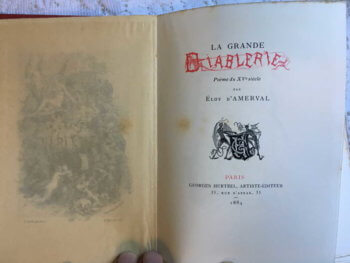 La Grande Diablerie, poem du XVe siècles, by Éloy d'Amerval (George Hurtrel, Artiste-Édueur, Paris, 1884, #152/1000 hand signed by publisher) 5" x 6.75", 216pp, in original published state, french wraps with loose hardcover/case, red with gilt decoration, frontispiece and 3 full page engravings by Paul Avril protected by tissue guard, images throughout, good minus condition, spine cover is sunned, binding is loose and splitting in places Eloy d'Amerval (fl. 1455 – 1508) was a French composer, singer, choirmaster, and poet of the Renaissance. He spent most of his life in the Loire Valley of France. From his poetic works, the long poem Le livre de la deablerie, it can be inferred that he knew most of the famous composers of the time, even though his own musical works never approached theirs in renown. This poem, considered invaluable to music historians, recounts a dialogue between Satan and Lucifer, in which their nefarious plotting of future evil deeds is interrupted periodically by the author, who among other accounts of earthly and divine virtue, records useful information on contemporary musical practice. In addition to listing musical instruments, he lists who he considers to be the great composers of the time: they are residents of Paradise in his poem, even though several were still alive in 1508, the date of its composition. Édouard-Henri Avril (1849-1928) used the pseudonym “Paul Avril” for his erotic work. He was a French painter and commercial artist. His career saw collaboration with influential people like Octave Uzanne, Henry Spencer Ashbee and Friedrich Karl Forberg. He is one of the most celebrated erotic artists of his age. Avril was a soldier before starting his career in art. He was awarded with the Legion of Honour for his actions in the Franco-Prussian War.
La Grande Diablerie, poem du XVe siècles, by Éloy d'Amerval (George Hurtrel, Artiste-Édueur, Paris, 1884, #152/1000 hand signed by publisher) 5" x 6.75", 216pp, in original published state, french wraps with loose hardcover/case, red with gilt decoration, frontispiece and 3 full page engravings by Paul Avril protected by tissue guard, images throughout, good minus condition, spine cover is sunned, binding is loose and splitting in places Eloy d'Amerval (fl. 1455 – 1508) was a French composer, singer, choirmaster, and poet of the Renaissance. He spent most of his life in the Loire Valley of France. From his poetic works, the long poem Le livre de la deablerie, it can be inferred that he knew most of the famous composers of the time, even though his own musical works never approached theirs in renown. This poem, considered invaluable to music historians, recounts a dialogue between Satan and Lucifer, in which their nefarious plotting of future evil deeds is interrupted periodically by the author, who among other accounts of earthly and divine virtue, records useful information on contemporary musical practice. In addition to listing musical instruments, he lists who he considers to be the great composers of the time: they are residents of Paradise in his poem, even though several were still alive in 1508, the date of its composition. Édouard-Henri Avril (1849-1928) used the pseudonym “Paul Avril” for his erotic work. He was a French painter and commercial artist. His career saw collaboration with influential people like Octave Uzanne, Henry Spencer Ashbee and Friedrich Karl Forberg. He is one of the most celebrated erotic artists of his age. Avril was a soldier before starting his career in art. He was awarded with the Legion of Honour for his actions in the Franco-Prussian War. -
Out of stock
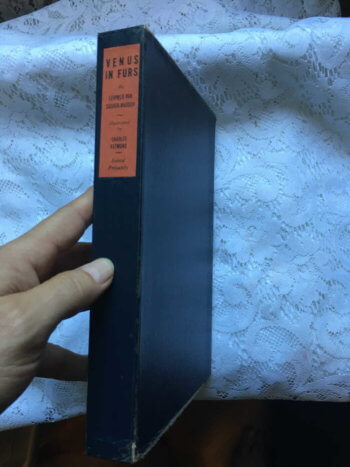
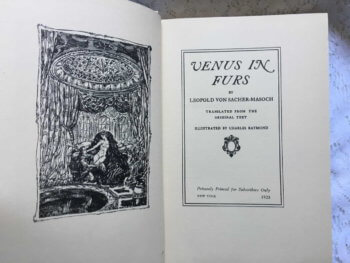 Venus in Furs, Leopold von Sacher-Masoch, illustrated by Charles Raymond [trans. Fernanda Savage] (Privately Printed For Subscribers Only, New York, 1928) 218pp, hardbound with slipcase, blue faux sued boards, white spine with gilt titles, deckled edges, dark blue slipcase with orange title on spine, very good condition for age, slipcase bumps and rubbing repair to bottom of spine, book clean, pages in unread condition with some remaining uncut Venus in Furs (German: Venus im Pelz) is a novella by Leopold Ritter von Sacher-Masoch (1836-1895), an Austrian writer and journalist. It is now his best known work and because of its themes the term masochism is derived from his name, coined by the Austrian psychiatrist, Krafft-Ebing. The novel was to be part of an epic series that Sacher-Masoch envisioned called Legacy of Cain. Venus in Furs was part of Love, the first volume of the series. It was published in 1870. The novel draws themes, like female dominance and sadomasochism, and character inspiration heavily from Sacher-Masoch's own life. Wanda von Dunajew, the novel's central female character, was modelled after his mistress Baroness Fanny Pistor. In December 1869 the two signed a contract making him her slave for a period of 6 months. In 1873, after the publication of Venus in Furs, Sacher-Masoch married Aurora von Rümelin who he pressured to continue the lifestyle he wrote about in his book. After 10 years they divorced. Rümelin, using the pseudonym of the books title character, "Wanda von Dunajew", wrote Meine Lebensbeichte (My Life Confession) published in 1906. It detailed Sacher-Masoch's private life and her relationship with him. During his lifetime, Sacher-Masoch was well known as a man of letters, a utopian thinker who espoused socialist and humanist ideals in his fiction and non-fiction. Most of his works remain untranslated into English. Until recently, his novel Venus in Furs was his only book commonly available in English.
Venus in Furs, Leopold von Sacher-Masoch, illustrated by Charles Raymond [trans. Fernanda Savage] (Privately Printed For Subscribers Only, New York, 1928) 218pp, hardbound with slipcase, blue faux sued boards, white spine with gilt titles, deckled edges, dark blue slipcase with orange title on spine, very good condition for age, slipcase bumps and rubbing repair to bottom of spine, book clean, pages in unread condition with some remaining uncut Venus in Furs (German: Venus im Pelz) is a novella by Leopold Ritter von Sacher-Masoch (1836-1895), an Austrian writer and journalist. It is now his best known work and because of its themes the term masochism is derived from his name, coined by the Austrian psychiatrist, Krafft-Ebing. The novel was to be part of an epic series that Sacher-Masoch envisioned called Legacy of Cain. Venus in Furs was part of Love, the first volume of the series. It was published in 1870. The novel draws themes, like female dominance and sadomasochism, and character inspiration heavily from Sacher-Masoch's own life. Wanda von Dunajew, the novel's central female character, was modelled after his mistress Baroness Fanny Pistor. In December 1869 the two signed a contract making him her slave for a period of 6 months. In 1873, after the publication of Venus in Furs, Sacher-Masoch married Aurora von Rümelin who he pressured to continue the lifestyle he wrote about in his book. After 10 years they divorced. Rümelin, using the pseudonym of the books title character, "Wanda von Dunajew", wrote Meine Lebensbeichte (My Life Confession) published in 1906. It detailed Sacher-Masoch's private life and her relationship with him. During his lifetime, Sacher-Masoch was well known as a man of letters, a utopian thinker who espoused socialist and humanist ideals in his fiction and non-fiction. Most of his works remain untranslated into English. Until recently, his novel Venus in Furs was his only book commonly available in English. -
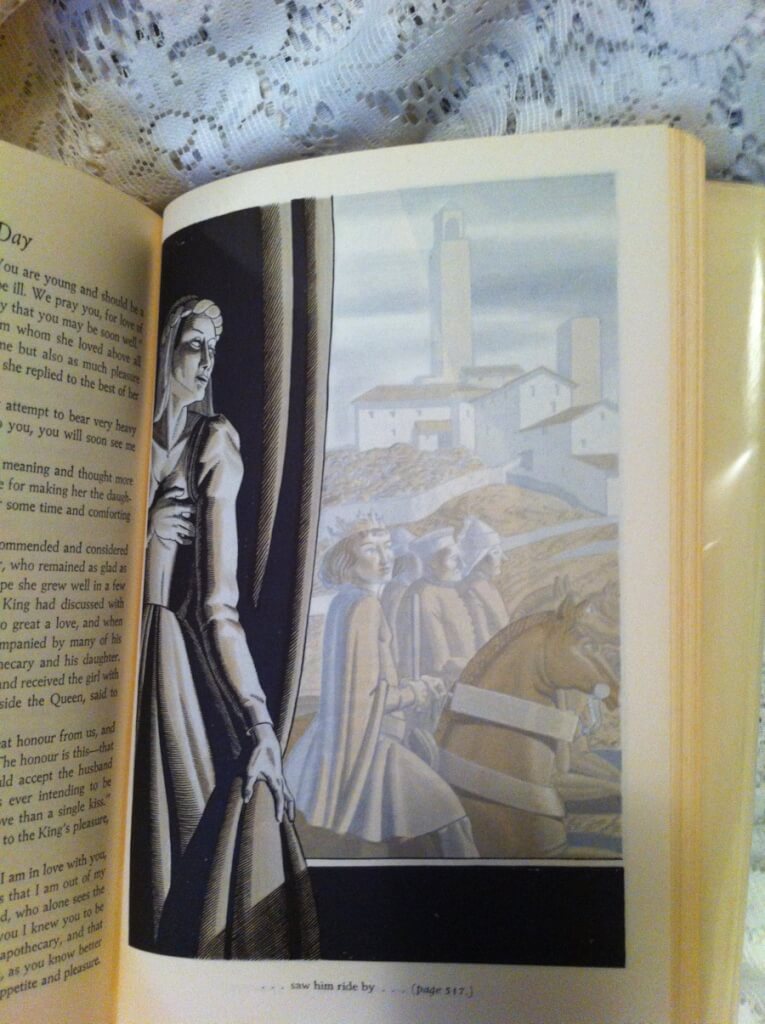
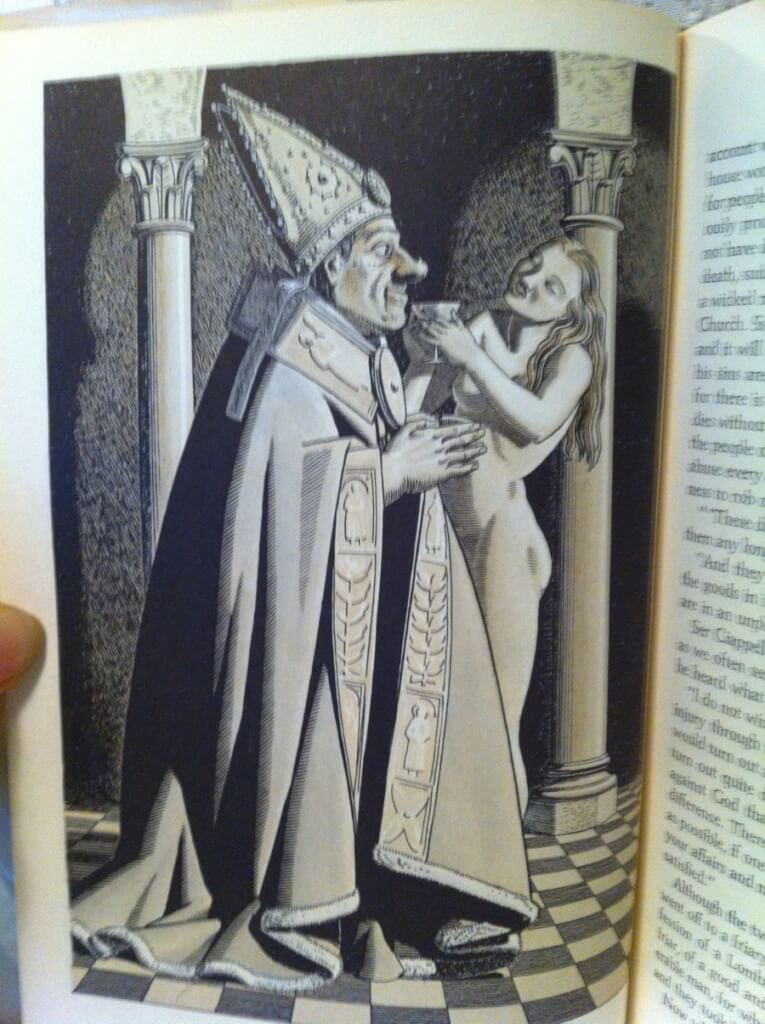 The Decameron of Giovanni Boccaccio, Giovanni Boccaccio, trans. Richard Aldington, illustrated by Rockwell Kent (Garden City Books, Garden City, NY, 1949 [date of illustrations]) 9 1/2" X 6 3/8", 562pp, hardbound with DJ protected by mylar, green boards with cream spine, great condition. This is the popular (at the time) Garden City edition. Superb art deco color illustrations throughout by Rockwell Kent (famous illustrator of Moby Dick and others). The Decameron, (subtitled Prencipe Galeotto or Prince Galehaut), is a collection of novellas by the 14th-century Italian author Giovanni Boccaccio (1313–1375). The book is structured as a frame story containing 100 tales told by a group of seven young women and three young men sheltering in a secluded villa just outside Florence to escape the Black Death, which was afflicting the city. To make their exile more pleasant each of the ten tells the others one story every day. The Decameron records the narratives of ten days -- 100 stories. Boccaccio probably conceived of The Decameron after the epidemic of 1348, and completed it by 1353. These tales run the entire range of human emotion: grief, love, humor, anger, revenge. Many are based on oral folklore. Boccaccio's ten narrators thus retell already familiar stories about errant priests, rascally husbands, and mischievous wives. Variants of these stories are known in many cultures, but no one formulates them more cleverly or relates them more eloquently than does Boccaccio. In addition to its literary value and widespread influence, it provides a document of life at the time. Written in the vernacular of the Florentine language, it is considered a masterpiece of classical early Italian prose.
The Decameron of Giovanni Boccaccio, Giovanni Boccaccio, trans. Richard Aldington, illustrated by Rockwell Kent (Garden City Books, Garden City, NY, 1949 [date of illustrations]) 9 1/2" X 6 3/8", 562pp, hardbound with DJ protected by mylar, green boards with cream spine, great condition. This is the popular (at the time) Garden City edition. Superb art deco color illustrations throughout by Rockwell Kent (famous illustrator of Moby Dick and others). The Decameron, (subtitled Prencipe Galeotto or Prince Galehaut), is a collection of novellas by the 14th-century Italian author Giovanni Boccaccio (1313–1375). The book is structured as a frame story containing 100 tales told by a group of seven young women and three young men sheltering in a secluded villa just outside Florence to escape the Black Death, which was afflicting the city. To make their exile more pleasant each of the ten tells the others one story every day. The Decameron records the narratives of ten days -- 100 stories. Boccaccio probably conceived of The Decameron after the epidemic of 1348, and completed it by 1353. These tales run the entire range of human emotion: grief, love, humor, anger, revenge. Many are based on oral folklore. Boccaccio's ten narrators thus retell already familiar stories about errant priests, rascally husbands, and mischievous wives. Variants of these stories are known in many cultures, but no one formulates them more cleverly or relates them more eloquently than does Boccaccio. In addition to its literary value and widespread influence, it provides a document of life at the time. Written in the vernacular of the Florentine language, it is considered a masterpiece of classical early Italian prose. -

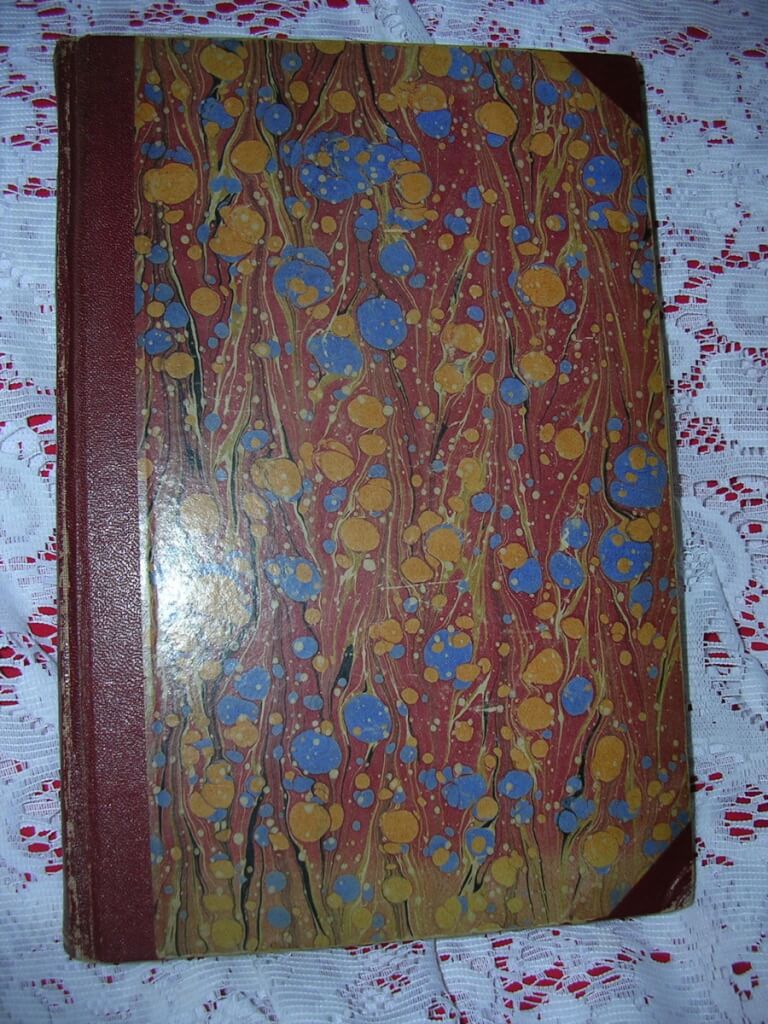 Immortalia, an anthology of american ballads, sailors' songs, cowboy songs, college songs, parodies, limericks, and other humorous verses and doggerel now for the first time brought together in book form, "By A Gentleman About Town" [T. R. Smith?] ("...privately printed for subscribers, none is for general sale" 1927 [pirated edition from the 2nd printing 1928 edtion, c.1932. New York: Samuel Roth or, less likely, Philadelphia: Nathan Young and Robert Sterling].) 6" x 8.75", iii, 184 pp., hardbound no DJ, decorated paper boards, cloth on spine and corners, worn edges on boards, corners bumped, binding tight. Assumed to be edited by T. R. Smith (George Macy, editor of Poetica Erotica around the same time). This is the most influential and widely published/circulated collection of "bawdry". Most collections since borrow from it liberally. There is a heavy emphasis on limericks (103 to be exact). Included are poems/"doggerel" attributed to James Joyce and D.H. Lawrence.
Immortalia, an anthology of american ballads, sailors' songs, cowboy songs, college songs, parodies, limericks, and other humorous verses and doggerel now for the first time brought together in book form, "By A Gentleman About Town" [T. R. Smith?] ("...privately printed for subscribers, none is for general sale" 1927 [pirated edition from the 2nd printing 1928 edtion, c.1932. New York: Samuel Roth or, less likely, Philadelphia: Nathan Young and Robert Sterling].) 6" x 8.75", iii, 184 pp., hardbound no DJ, decorated paper boards, cloth on spine and corners, worn edges on boards, corners bumped, binding tight. Assumed to be edited by T. R. Smith (George Macy, editor of Poetica Erotica around the same time). This is the most influential and widely published/circulated collection of "bawdry". Most collections since borrow from it liberally. There is a heavy emphasis on limericks (103 to be exact). Included are poems/"doggerel" attributed to James Joyce and D.H. Lawrence. -
 Ninety-Five Limericks | A Contribution to the Folk Lore of our Time | Collected and Edited by John Falmouth (The Limerick Press, Suffern, NY, 1932) 5"x7.25", unpaginated, protected DJ over tan cloth boards with red lettering and decorations, tears and soiling to DJ, some soiling on boards, interior good, previous owner added a limerick about a young man from Calcutta in the end pages. Mr. Falmouth has a 6 page forward where he discusses the phallic nature of the limerick (with diagrams). A fun little book even though the profanity is exed out.
Ninety-Five Limericks | A Contribution to the Folk Lore of our Time | Collected and Edited by John Falmouth (The Limerick Press, Suffern, NY, 1932) 5"x7.25", unpaginated, protected DJ over tan cloth boards with red lettering and decorations, tears and soiling to DJ, some soiling on boards, interior good, previous owner added a limerick about a young man from Calcutta in the end pages. Mr. Falmouth has a 6 page forward where he discusses the phallic nature of the limerick (with diagrams). A fun little book even though the profanity is exed out. -
 Sex Mythology | including an account of the | Masculine Cross, anonymous, Sha Rocco [Abisha S. Hudson] (Privately Printed, London, 1898, one of 200 copies unnumbered) 8.25" X 6", 64pp, quarter white cloth over grey boards, good condition, some bumping to corners, bookplate of Virginia & Edwin Irwin, bookseller stamp of George T. Juckes, London. An account of primitive symbolism and ancient phallic worship including Yoni, Shaga, Hebrew phallicism, Bacchic festivals, sexual rites, religious prostitution, and the mysteries of the ancient faiths. "The phallus and the sexual vocabulary of the Bible are explained within for the first time." The work is anonymous but much of the text comes from the writer of the preface, Sha Rocco, a pseudonym for Abisha S. Hudson. Abisha was born Abisha Shumway Hudson (1819-1905) was born in Oxford, Massachusetts one half of a pair of twins: his twin brother, Abijah T. Hudson, was never far from Abisha; the two trained as physicians together, lived together, and doctored together, in the midwest and on the west coast, even after they married. In April of 1855, Abisha radicalized, ordering a copy of Robert Taylor's infamous Diegesis from the bookstore of the Boston Investigator to hone his arguments as an anti-Christian free-thinker: the subtext for Sha Rocco's Masculine Cross. In 1874, The Masculine Cross and Ancient Sex Worship is published, by Asa K. Butts, a free-thought publisher in New York. Other published editions followed and he contributed to the present book published in London. Abisha was a public Spiritualist and the author of at least one other work "Tree and Serpent Worship" published around 1894, this time using his own name.
Sex Mythology | including an account of the | Masculine Cross, anonymous, Sha Rocco [Abisha S. Hudson] (Privately Printed, London, 1898, one of 200 copies unnumbered) 8.25" X 6", 64pp, quarter white cloth over grey boards, good condition, some bumping to corners, bookplate of Virginia & Edwin Irwin, bookseller stamp of George T. Juckes, London. An account of primitive symbolism and ancient phallic worship including Yoni, Shaga, Hebrew phallicism, Bacchic festivals, sexual rites, religious prostitution, and the mysteries of the ancient faiths. "The phallus and the sexual vocabulary of the Bible are explained within for the first time." The work is anonymous but much of the text comes from the writer of the preface, Sha Rocco, a pseudonym for Abisha S. Hudson. Abisha was born Abisha Shumway Hudson (1819-1905) was born in Oxford, Massachusetts one half of a pair of twins: his twin brother, Abijah T. Hudson, was never far from Abisha; the two trained as physicians together, lived together, and doctored together, in the midwest and on the west coast, even after they married. In April of 1855, Abisha radicalized, ordering a copy of Robert Taylor's infamous Diegesis from the bookstore of the Boston Investigator to hone his arguments as an anti-Christian free-thinker: the subtext for Sha Rocco's Masculine Cross. In 1874, The Masculine Cross and Ancient Sex Worship is published, by Asa K. Butts, a free-thought publisher in New York. Other published editions followed and he contributed to the present book published in London. Abisha was a public Spiritualist and the author of at least one other work "Tree and Serpent Worship" published around 1894, this time using his own name. -
 1601 A Tudor Fireside Conversation As Written by the Ingenuous, Virtuous and learned Mark Twain, wit., Embellished by the worthy Alan Odle, Mark Twain, illustrations Alan Odle (Land's End Press, USA, 1969, stated "At London, Printed for Subscribers Only and are to be sold at ye beare Back-Side in Maiden Lane") 8.75"x11.25", 24pp (unpaginated), hardbound with mylar-protected dust jacket, red boards with gilt titles [Date: 1601.] Conversation, as it was the Social Fireside, in the Time of the Tudors is the title of a humorous work by Mark Twain, first published anonymously in 1880. Edward Wagenknecht once referred to it as "the most famous piece of pornography in American literature." Its content is irreverent and vulgar rather than obscene, and its purpose seems to be comedic shock rather than erotic arousal. It would thus qualify as ribaldry rather than pornography. Twain wrote 1601 during the summer of 1876 (between writing Tom Sawyer and Huckleberry Finn), for the amusement of his closest friend, Reverend Joseph Twichell, 1601 was later first published by another friend, John Hay, who later became Secretary of State. The work circulated among printers (due to it's often archaic type font) and many small batches were printed, however the authorship of the work remained unverified until Twain finally acknowledged he wrote it in 1906.
1601 A Tudor Fireside Conversation As Written by the Ingenuous, Virtuous and learned Mark Twain, wit., Embellished by the worthy Alan Odle, Mark Twain, illustrations Alan Odle (Land's End Press, USA, 1969, stated "At London, Printed for Subscribers Only and are to be sold at ye beare Back-Side in Maiden Lane") 8.75"x11.25", 24pp (unpaginated), hardbound with mylar-protected dust jacket, red boards with gilt titles [Date: 1601.] Conversation, as it was the Social Fireside, in the Time of the Tudors is the title of a humorous work by Mark Twain, first published anonymously in 1880. Edward Wagenknecht once referred to it as "the most famous piece of pornography in American literature." Its content is irreverent and vulgar rather than obscene, and its purpose seems to be comedic shock rather than erotic arousal. It would thus qualify as ribaldry rather than pornography. Twain wrote 1601 during the summer of 1876 (between writing Tom Sawyer and Huckleberry Finn), for the amusement of his closest friend, Reverend Joseph Twichell, 1601 was later first published by another friend, John Hay, who later became Secretary of State. The work circulated among printers (due to it's often archaic type font) and many small batches were printed, however the authorship of the work remained unverified until Twain finally acknowledged he wrote it in 1906. -
 Marriage Ceremonies and Priapic Rites in India and the East, "by a member of the Royal Asiatic Society" (Printed for Private Circulation Only, 1909) 9" X 7.25", 107pp., hardbound, blue cloth boards, gilt and red titles on spine, top edge gilt. Very good condition, binding good hinges good. From forward: "The sentiments of Hindu Sages that follow have been chosen mostly from well-known books. They are instructive in many respects, and pretend to be nothing but a collection of notes made by the author while seeking a solution to his own doubts and difficulties... So this monograph--the subject of which is the one most intimately bound up with the life of every man and woman--will be found useful and interesting, both to the Aryans of the East, and to the Aryans of the West, and further needs no apology for its appearance."
Marriage Ceremonies and Priapic Rites in India and the East, "by a member of the Royal Asiatic Society" (Printed for Private Circulation Only, 1909) 9" X 7.25", 107pp., hardbound, blue cloth boards, gilt and red titles on spine, top edge gilt. Very good condition, binding good hinges good. From forward: "The sentiments of Hindu Sages that follow have been chosen mostly from well-known books. They are instructive in many respects, and pretend to be nothing but a collection of notes made by the author while seeking a solution to his own doubts and difficulties... So this monograph--the subject of which is the one most intimately bound up with the life of every man and woman--will be found useful and interesting, both to the Aryans of the East, and to the Aryans of the West, and further needs no apology for its appearance." -
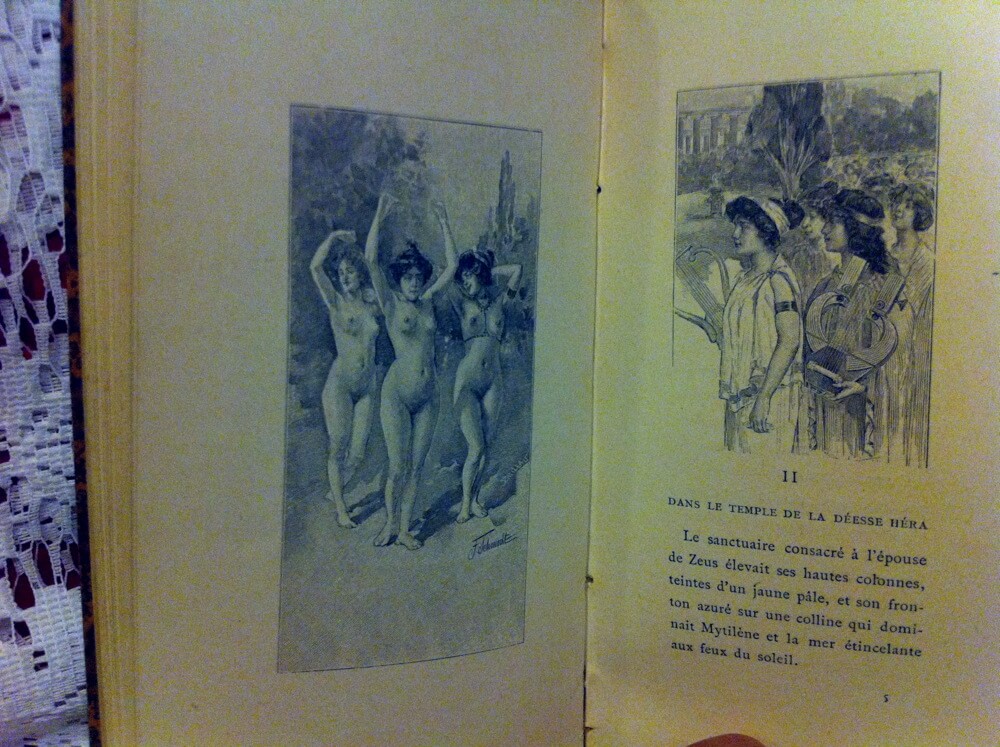
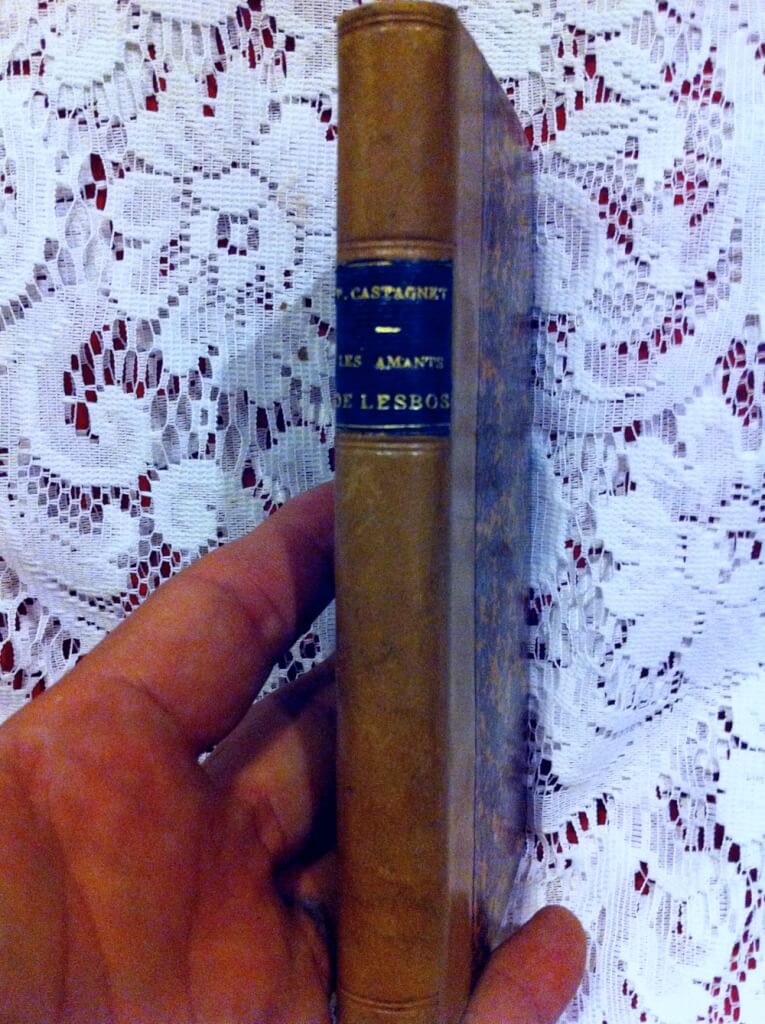 Les Amants de Lesbos, Prosper Castanier, illus. Franz Schmidt (Librairie L. Borel, Paris, 1900) 6" X 3.25", 116pp, Hardbound in 1/4 tan leather over marbled boards, marbled end-papers, glassine protective tissue for title page with gold emblem stamped on it. Very good condition. An imagination of the life and loves of the poet Sappho and her fight against the tyrant of Mytilene. The French author, poet, novelist and historian Prosper Castanier (1865-19??) was born in Saint-Ambroix (Gard). He was the editor-in-chief of the "Progrès du midi". He had made a specialty of novels set in antiquity. (Particularly after the success of Aphrodite by Pierre Louès, published in 1896)
Les Amants de Lesbos, Prosper Castanier, illus. Franz Schmidt (Librairie L. Borel, Paris, 1900) 6" X 3.25", 116pp, Hardbound in 1/4 tan leather over marbled boards, marbled end-papers, glassine protective tissue for title page with gold emblem stamped on it. Very good condition. An imagination of the life and loves of the poet Sappho and her fight against the tyrant of Mytilene. The French author, poet, novelist and historian Prosper Castanier (1865-19??) was born in Saint-Ambroix (Gard). He was the editor-in-chief of the "Progrès du midi". He had made a specialty of novels set in antiquity. (Particularly after the success of Aphrodite by Pierre Louès, published in 1896)














